When the soap gremlins swarm
If you do a google, etsy, or Facebook search for “handmade soap”, you’ll find thousands of gorgeous bars, each lovingly handcrafted by soap artisans around the world. Unfortunately, not every soap we make turns out the way we envisioned it.
Mica can morph from pink to blinding orange, fragrance oils can discolour the soap (hello vanilla) or accelerate the process so fast that you end up with what we Soapmakers lovingly refer to as “soap on a stick”. We blame these mishaps on the soap gremlins that sometimes move into your house and wreak havoc on everything you touch.
So today I’m showing you the dark, dirty, hidden side of soapmaking….the fails!
This fragrance oil turned my beautiful blue soap into an ugly grayish purple, and also accelerated it so much that I had to plop and push it into the mold.
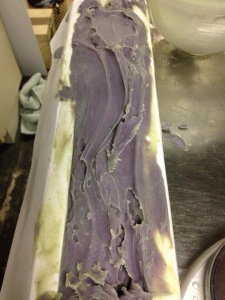
It eventually turned back to dark blue, but the bar was full of air holes, so I chopped it into cubes and added it into a new batch.
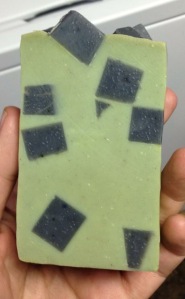
This pile is what happens when you wait too long to cut your salt bars. You have to cut them when the soap is still so hot that it almost burns your finger, which for me is about an hour after pouring in the molds. With this batch I was 15 – 20 minutes late, and this crumbly mess was the result….still fantastic soap, but destined only for my own shower, not for customers.
 Here for your viewing pleasure is the aforementioned “soap on a stick”. Many fragrance oils, especially some florals and spices will react when you add them to your raw soap batter, causing them to seize almost instantly.
Here for your viewing pleasure is the aforementioned “soap on a stick”. Many fragrance oils, especially some florals and spices will react when you add them to your raw soap batter, causing them to seize almost instantly.
INSERT PHOTO (Okay, surprisingly I don’t seem to have a picture of this! If any of my Soapmaking cohorts would like to add one into the comments below, that would be great.)
Then we have an example of what happens when you soap too hot when using honey. Anything that contains sugar, be it honey, milk, beer etc, heats up like crazy in the soap causing cracking, volcanoes (yes it does exactly what it sounds like!) and other messes. Usually when I make my oatmeal and honey soap, I premix my lye solution and let it cool down completely overnight before mixing the soap. This time, I forgot and poured it in while it was still around 200 degrees F. Oops. Totally unsalvageable.
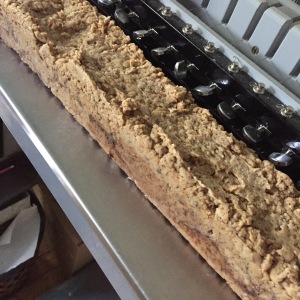
For comparison, this is what it should look like!
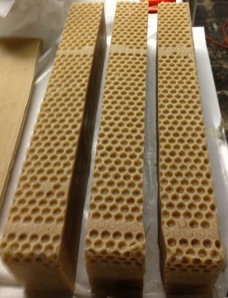
Finally, we have my newest Christmas soap. I had such a vision for this one: just enough fir needle to make you think of the holiday without feeling like you’d been slapped in the face with a Christmas tree. A touch of frankincense and myrrh for warmth and depth. Just a kiss of vanilla to brighten the blend. It smelled divine. Unfortunately I made two mistakes with this one: I didn’t stir my palm oil well enough, which left small spots of undissolved stearic acid in the soap (you can see them easily because the vanilla formed little circles around them), and I didn’t use enough colorant to cover up the rather unattractive beigey green caused by the vanilla and Frankincense & myrrh fragrance oils. Sigh.

The good news is that one of my guinea pigs (er, I mean good friend and valued consumer tester) just PMd me that this is her favourite fragrance of all my soaps, and believe me she’s tried most of them! I happen to agree….it smells divine, so will make its debut this Christmas as Winter Solstice, without the spotty complexion, and a beautiful deep green, I think. Watch for its unveiling soon!
So the next time you see a beautiful handmade soap, think about not only the hours spent on formulating the perfect recipe, and envisioning the design, but also the dozens of test batches and disheartening fails that led to that gorgeous bar. Behind every bar of handcrafted soap is a soapmaker who puts his or her heart and soul into every batch.
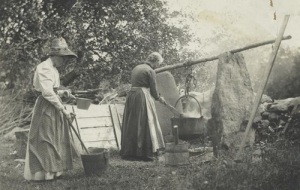

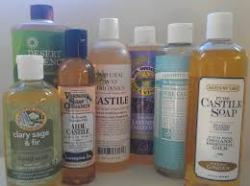
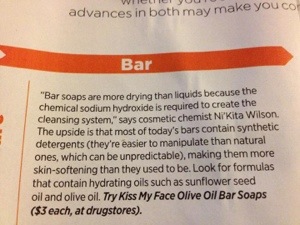

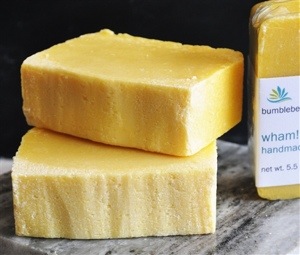
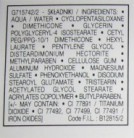

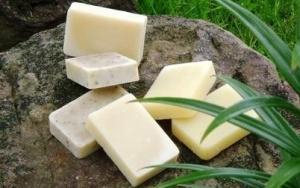
Written
on March 28, 2013